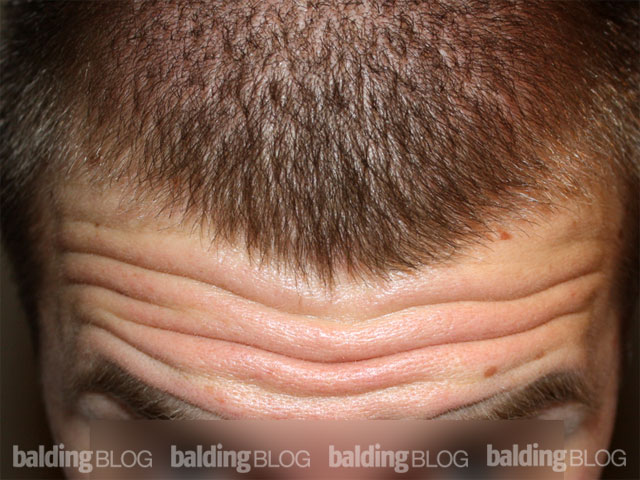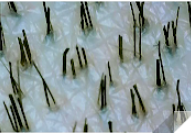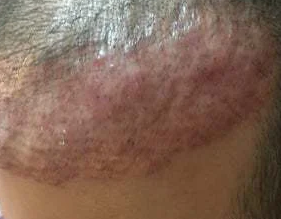Hello, I’m 26 years old and was curious if I have a juvenile or mature hairline in my photo. My hairline has been the same since I was 16 or so by looking at past photos and I’ve had no hair loss or recession in other areas. The current length of it is 1/2in.
You have my permission to use for the site.
Thanks for your permission to post this. Click to enlarge:

This is a great picture because you wrinkled your brow, as I always ask my patients to include in their photo, is touching the highest wrinkle. If you follow the highest crease, that is where your hairline was when you were 7-9 years old. The corners are rising very slightly, but this is still in the Norwood class 1 category and I would consider this a juvenile hairline still.
There is a wide range between when your hairline hugged the highest crease to a fully mature hairline. What is noteworthy about your present hairline is that the mid-line ‘kisses’ the upper crease, which is clearly the same hairline you had in the middle when you were between 7-9 years old.


